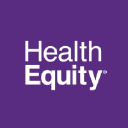| Price | $92.99 |
| Year Range | $76.77 - $114.51 |
| Target Price | Sign up |
| Volume | 817,360 |
| Market Cap | $7.88B |
| PE Ratio | 55.44 |
| Dividend Yield | 0% |
| Industry | Digital health |
AI stock analysis for Healthequity
Welcome to our AI-driven stock analysis tool, where sophisticated technology meets comprehensive market data to empower your investment decisions. Focusing on Healthequity, our platform leverages the advanced capabilities of Chat GPT to meticulously analyze a wealth of information from AltIndex. This includes in-depth fundamental data, technical analysis, and a range of alternative data sources. By integrating these diverse datasets, Chat GPT provides a nuanced and insightful stock analysis, offering you a well-rounded recommendation based on its extensive knowledge and real-time market insights.
Access to our AI stock Analysis (powered by our data and Chat GPT) is only available for our premium users. Sign up to get access today!

